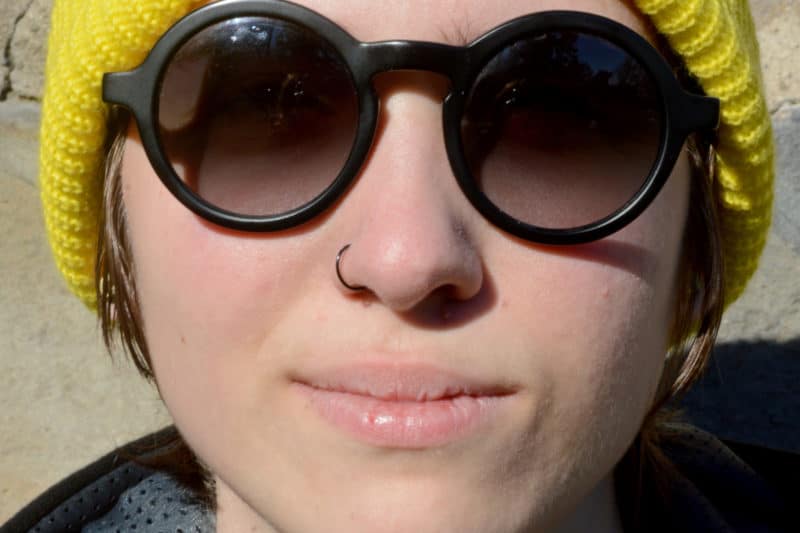The LGBTQ community has slowly been making its way towards equality, but one specific group still feels misunderstood in the United States. For people who identify as non-binary, or who identify as neither male or female, expression is difficult with the lack of options available and the lack of support from the community.
“In Western civilization we tend to classify people according to binaries,” says Caroline Dadas, a Gender Studies Professor at Montclair State University, “And especially when it comes to gender, we think of masculine and feminine and no other options in between. So, someone who is non-binary is trying to break out of that framework and reject the notion that there are just two options.”
Kate Ferraro, who prefers the pronouns they and them, is a student at William Paterson University who identifies as non-binary. Ferraro discovered they were non-binary about three years ago when they didn’t feel right in their body. Although born female, Ferraro feels on the inside that they are somewhere in between male and female. Many of Ferraro’s friends are accepting of their expression, however not many outside people or even family members are.
“I wish people would just understand that what we’re feeling inside is real and try to understand the struggle,” says Ferraro, “Even if they don’t understand, I want them to respect me for who I am.”
According to The New York Times, the Trump administration has been considering redefining gender as biological. This means that gender will be strictly determined by genitalia at birth. For those who identify as non-binary, this takes away the freedom of gender expression. They will be forced to identify themselves as male or female when they wish to express themselves as neither.
The Obama administration, which recognized gender as an individual’s choice rather than a sex assigned at birth, was a step forward in gender expression. If the Trump administration successfully redefines gender as biological, the United States will continue to be almost a decade behind other countries who not only define gender as a choice, but who even give individuals a third option.
In countries such as Australia, New Zealand and Germany, gender “X” in an option on government documents for those who identify as neither male or female. The infographic below shows the steps that these as well as other countries have been taking over time to expand the options for gender expression. The first of these cases started in 2009.
But not all of the United States is behind in gender expression. In fact, many states have taken action to give individuals, such as those who are non-binary, another option. States such as Oregon, Maine, Washington State and California give their citizens a third gender option, like gender “X”. Even New York City will be adding a third gender option on their birth certificates starting on January 1, 2019.
Montclair State University itself has students who are working to bring light to the non-binary community. Maggie May Evans, a student at Montclair State University, also identifies as non-binary. Recently, they opened a gender friendly clothing swap in the LGBTQ Center located on campus. Through this clothing swap called My Body Armor, students can trade in their masculine and feminine clothes for clothing that is better fitted to the gender they wish to express.
“I’m just here to help in any way that I can, no matter where you are in your own story,” says Evans.
Communities both big and small will continue to push for more options for those who want to express their gender as neither male or female. A lot still needs to change, but advancements in gender identity continue to be made worldwide.
Therese Sheridan
Senior, Journalism Major
Therese Sheridan is a student journalist at Montclair State University anticipating to graduate in May, 2019. Through experiences such as being Photography Editor of The Montclarion newspaper on campus, being a social media intern for Montclair State University’s Admissions, and participating in a wide variety of media/communication classes including News Production Lab, Photojournalism, and Writing for Print and Online, Therese has developed the skills for multi-platform journalism. Currently Therese interns with Metro-North Railroad where she produces videos, writes articles, takes photos and posts to social media in the Corporate and Public Affairs Department.














